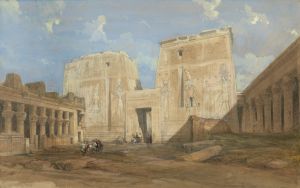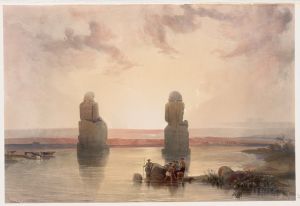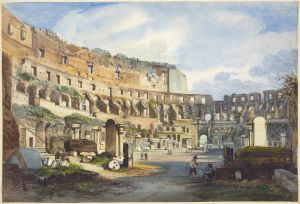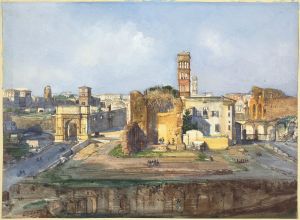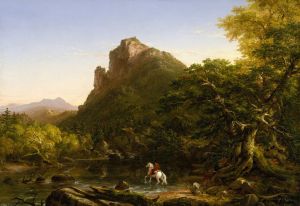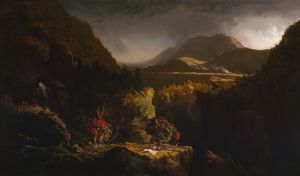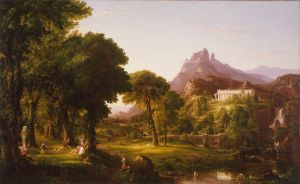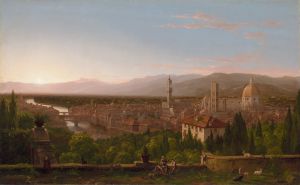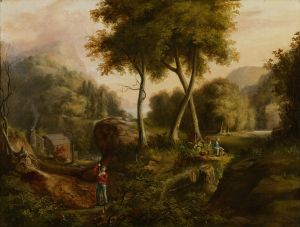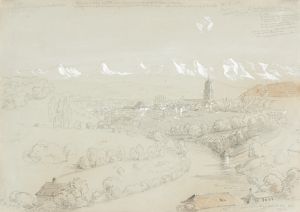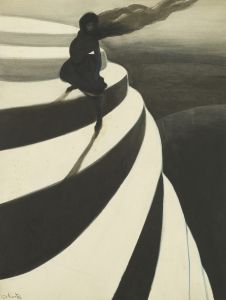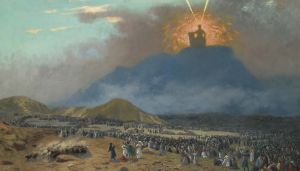
The Arch of Nero
A hand-painted replica of Thomas Cole’s masterpiece The Arch of Nero, meticulously crafted by professional artists to capture the true essence of the original. Each piece is created with museum-quality canvas and rare mineral pigments, carefully painted by experienced artists with delicate brushstrokes and rich, layered colors to perfectly recreate the texture of the original artwork. Unlike machine-printed reproductions, this hand-painted version brings the painting to life, infused with the artist’s emotions and skill in every stroke. Whether for personal collection or home decoration, it instantly elevates the artistic atmosphere of any space.
"The Arch of Nero" is a painting by the American artist Thomas Cole, known for his significant contributions to the Hudson River School, a mid-19th century American art movement characterized by its realistic and detailed portrayal of American landscapes and its themes of romanticism. Cole, born in 1801 in Lancashire, England, emigrated to the United States in 1818, where he became a pivotal figure in American landscape painting.
Thomas Cole painted "The Arch of Nero" in 1846, during a period when he was deeply engaged with themes of history and the rise and fall of civilizations. This painting is part of Cole's exploration of the cyclical nature of history, a theme he often revisited in his works. Cole was known for his allegorical landscapes that often carried moral or philosophical messages, reflecting his concerns about the impact of industrialization and expansion on the natural world.
"The Arch of Nero" depicts a grand, imaginary landscape that combines elements of the natural world with classical architecture. The painting features a monumental arch, reminiscent of the triumphal arches of ancient Rome, set against a dramatic and expansive landscape. The arch is adorned with intricate carvings and stands as a symbol of imperial power and human achievement. In the background, the landscape is lush and verdant, with a river winding through the scene, mountains in the distance, and a sky filled with dynamic clouds.
Cole's choice to include an arch named after the infamous Roman Emperor Nero suggests a contemplation on the transient nature of power and the eventual decay of empires. Nero, known for his tyrannical rule and the Great Fire of Rome, represents the darker aspects of imperial ambition and excess. By juxtaposing the grandeur of the arch with the serene and enduring beauty of nature, Cole may be commenting on the inevitable decline of human constructs in contrast to the timelessness of the natural world.
The painting reflects Cole's skill in combining detailed realism with imaginative elements, creating a scene that is both believable and fantastical. His use of light and shadow, as well as his attention to detail in both the natural and architectural elements, demonstrates his mastery of the landscape genre.
"The Arch of Nero" is housed in the collection of the Newark Museum of Art in Newark, New Jersey. It remains an important example of Cole's work and his philosophical engagement with the themes of history, nature, and the human condition. Through this painting, Cole invites viewers to reflect on the legacy of past civilizations and the enduring power of nature, a message that resonates with the concerns of his time and continues to be relevant today.





